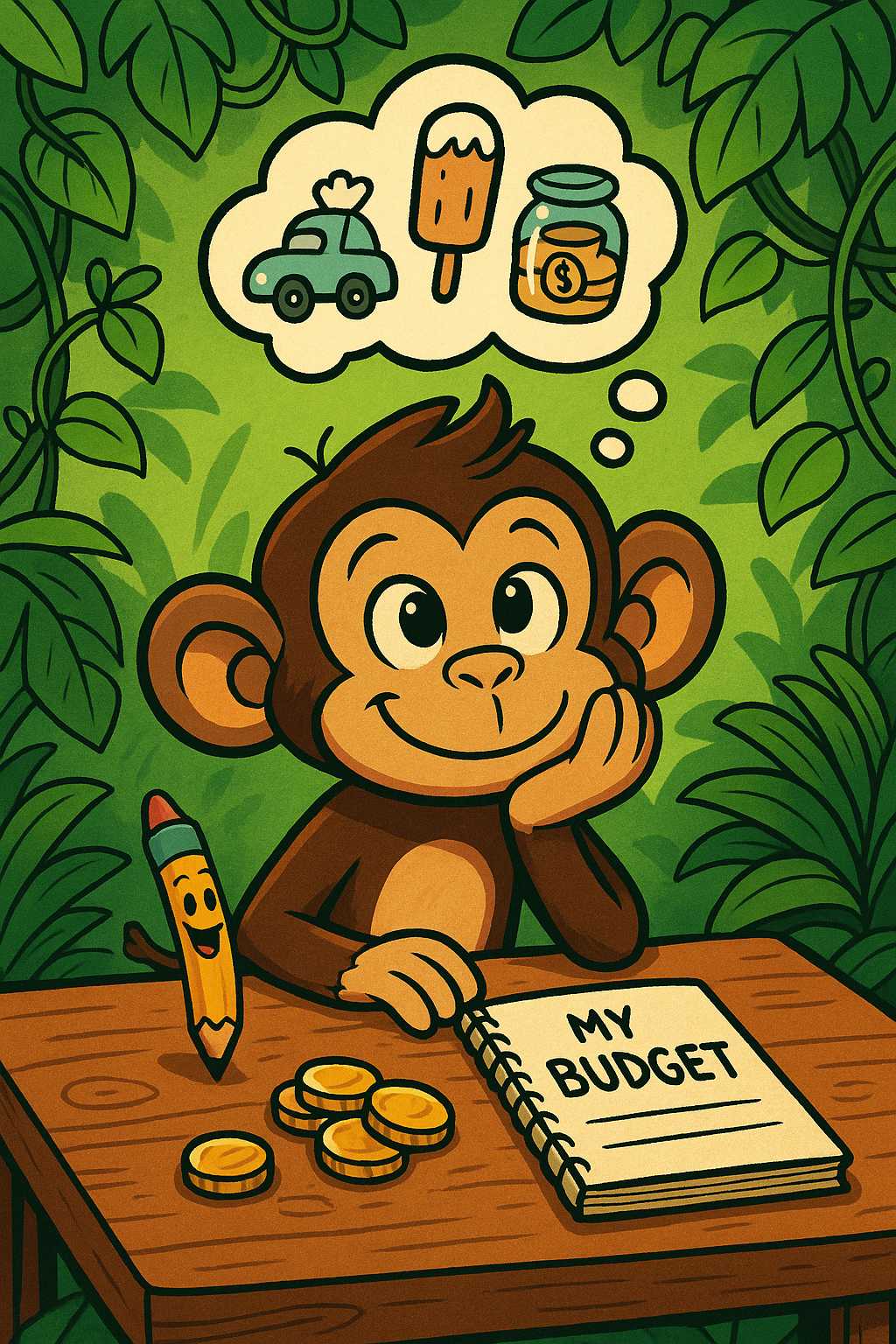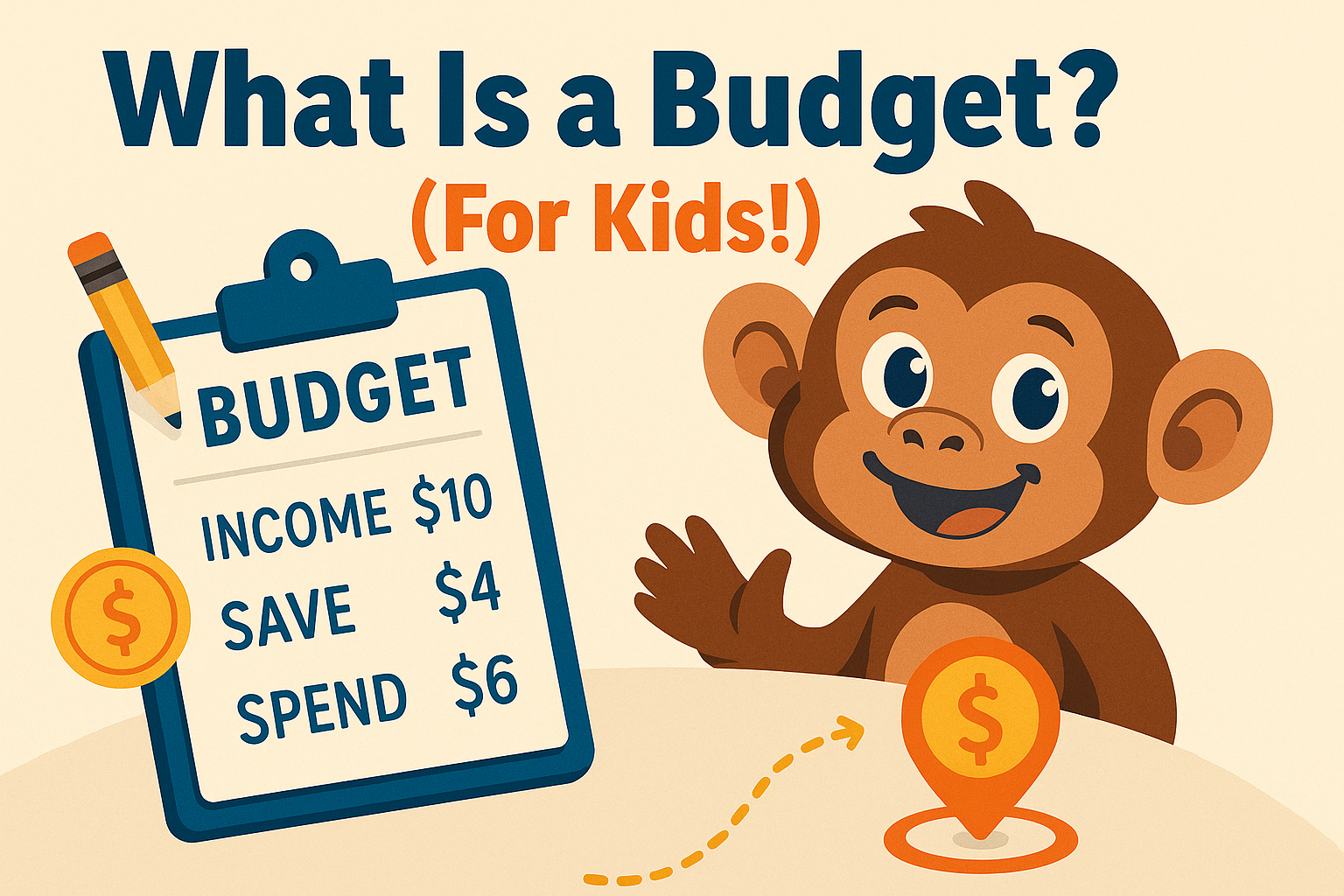🧠💰 What Is a Budget? (For Kids!)
👨👩👦 A Note to Parents
Now that your child understands how to save and spend – and how to tell needs from wants – it’s time to introduce another key financial skill: budgeting. Think of budgeting as a simple plan that shows kids how to use their money on purpose instead of just reacting in the moment.
Kids don’t need spreadsheets or finance apps. They just need a way to visualize where their allowance goes – and how it can help them reach their goals. In this post, we explain budgeting using everyday language, fun examples, and a story featuring Stoffel the Monkey.
🐵 A Story for Kids: Stoffel’s Jungle Budget
Stoffel the Monkey had been doing a great job saving his banana coins. Every week, he received 5 coins as allowance – and he had already learned to save for the cool things he wanted.
But one day, Stoffel got frustrated.
- He spent 2 coins on snacks
- 1 coin on a toy
- And gave 1 coin to his friend for jungle juice…
By the end of the week, he had nothing left and realized he was no closer to saving for the jungle binoculars he wanted.
He squawked, “I keep saving and spending, but I still can’t get what I want!”
His wise Grandma Monkey sat him down.
“Stoffel,” she said, “you need a budget. That’s just a fancy word for a money plan. You decide ahead of time how you’ll use your coins – before they disappear!”
So, Stoffel tried it.
Next week, he made a little plan:
- 2 coins for saving (for the binoculars)
- 2 coins for spending (snacks, toys, fun)
- 1 coin for giving or sharing
He drew boxes on a leaf and dropped a coin in each box as the week went on.
By the end of the week, he had 2 coins saved – just like he planned! “This feels awesome!” Stoffel cheered. “I’m getting closer to my goal!”
🧠 What Is a Budget, Really?
A budget is just a plan for your money.
It tells your coins where to go before they go missing.
When you make a budget, you:
- Decide how much to save
- Choose what to spend on now
- Think ahead toward a goal
It’s like drawing a treasure map – and your money follows it!
💬 How to Talk to Your Child
Here are some questions and phrases to help kids start budgeting:
- “What do you want to do with your coins this week?”
- “Do you want to save some for something special?”
- “What’s one thing you could spend on now and one thing you could save for later?”
- “Let’s make a little plan for your money before you use it.”
🎒 Try This at Home
🧾 Make a Mini Budget Together
At the start of each week:
- Give your child their allowance
- Use a simple worksheet or draw 3 jars/boxes: Save, Spend, Share
- Let your child decide how much goes into each part

🎯 Set a Short-Term Goal
Help your child pick something to save for (e.g. a book, toy, or activity in 3 – 4 weeks).
Then help them figure out:
“If it costs 12 coins, and I save 3 coins per week, I’ll get it in 4 weeks!”
Mark the goal on the budget sheet so they can track progress and stay motivated.
🔁 Reflect at the End of the Week
Ask:
- “Did your budget help you?”
- “What worked well? What would you change next week?”
This builds awareness and shows them that planning ahead pays off.
🧭 Final Thought
A budget isn’t a rulebook. It’s a tool.
It helps kids take control of their money and work toward the things they care about – one coin at a time.
When budgeting becomes a habit early on, kids learn that they can be in charge of their money, not the other way around. That’s the start of true financial confidence.
This is the third article in the StoffelWealth miniseries “Money Foundations for Kids”. Click on the following links to read the other parts:
Part 1: Save or Spend? Helping Kids Make Smart Money Choices
Part 2: Needs vs Wants: Helping Kids Make Smart Money Choices
Part 4: Where Does Money Come From? (And Why It Doesn’t Grow on Trees)

